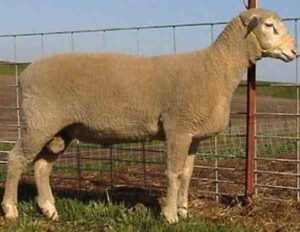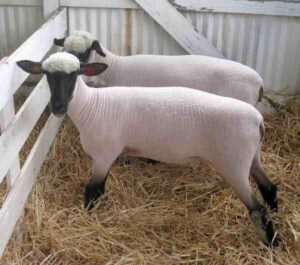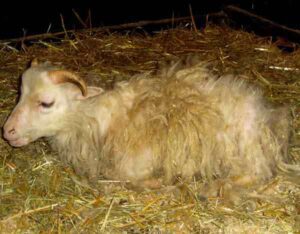The Najdi sheep is a breed of domestic sheep from Saudi Arabia. It is native to the Najd region of the Arabian Peninsula, from where it probably got it’s name.
It is thought that the breed is raised primarily in Saudi Arabia, but it is also present in Oman, Kuwait and Jordan. The breed is highly priced in it’s native area.
And some top Najdi ewes can sell for around US$ 5300-8000. And the rams which can sire many more offspring can fetch hundreds of thousands.
The Najdi sheep are very important animals in their native area, and also in the areas where they are found. However, read some more information about this breed of domestic sheep below.
Najdi Sheep Characteristics
The Najdi sheep are very beautiful animals. They have a distinctive appearance that has even been celebrated in Saudi ‘sheep beauty pageants’ not unlike livestock shows and sales in the West.
They have long face and are Roman nosed. They are very tall and have drooping ears. The rams may be either polled or have scurs, while the ewes are polled.

Common color of these animals is usually black with white faces and white on the legs and tail.
As a tall breed average body height of the mature animals is between 30 and 34 inches at the withers. Photo and info from Wikipedia.
Uses
Najdi sheep are multi-purpose animals. They are kept and used for meat, milk and also for wool production.
Special Notes
The Najdi sheep are very hardy animals. They are highly adapted to the life in the desert conditions. Although these animals are less drought tolerant than some other sheep breeds (such as the Awassi).
They are highly valued for their meat, milk and also for wool production. Although meat of these animals may be consumed locally, the breed is specially valued for their milk and long and straight wool.
However, review full breed profile of the Najdi sheep in the following chart.
| Breed Name | Najdi |
| Other Name | None |
| Breed Purpose | Meat, milk and wool |
| Special Notes | Strong and hardy, highly adapted to the life in the desert conditions, although they are less drought tolerant than other breeds, highly valued for their meat, milk and wool |
| Breed Size | Medium |
| Horns | The rams can be either polled or horned, and the ewes are polled |
| Climate Tolerance | Native climates |
| Color | Black with white face and legs |
| Rarity | Common |
| Country/Place of Origin | Saudi Arabia |






